Susan U. Neal's Blog, page 12
September 21, 2021
4 Dangers with Today’s Foods – Glyphosate, GMO’s, Celiac Disease, & Gluten
A century ago, before manufacturers processed foods, fruits and vegetables grew on farms and were distributed to local regions. The produce was fresh and needed to be eaten quickly. Wheat was a whole grain and had a short shelf life. Today manufacturers remove the bran and germ from the wheat kernel, so it doesn’t contain any nutrients. Today’s processed foods contain glyphosate and don’t even resemble the original food that it was made from.
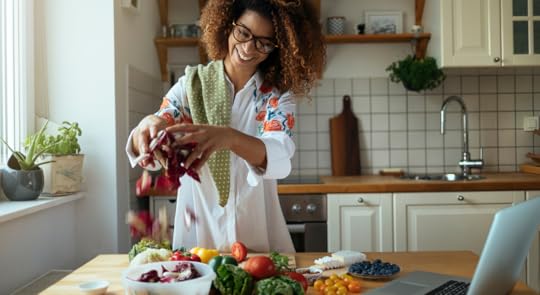
Glyphosate is the active ingredient in many herbicides, and it causes cancer. This toxic weed killer is sprayed on crops just prior to harvesting to help dry out the plan. Therefore, the glyphosate residue remains on food. Unfortunately, the federal government does not check to see if there is glyphosate residue on foods.
The Environmental Working Group (EWG) is a nonprofit organization dedicated to protecting human health and the environment. Every spring, this organization creates an annual Dirty Dozen and Clean Fifteen produce list. The Clean 15 items are the ones with the lowest pesticide and the Dirty Dozen foods are the ones with the highest.
To ensure you consume the safest foods, purchase organic produce from the following list of fruits and vegetables that are on the Dirty Dozen list:
StrawberriesSpinachKale, collard, and mustard greens NectarinesApplesGrapesCherriesPeachesPearsBell and hot peppers CeleryTomatoes [image error] Genetically Modified Organism (GMO)
Genetically Modified Organism (GMO)In the United States, there are five principal GMO crops that are not harmed by the herbicide glyphosate—wheat, oats, soy, corn, and sugar beets. Therefore, you could be consuming a carcinogen when you eat products made with these foods. The EWG found glyphosate residue on almost all the breakfast foods made with oats. Unfortunately, these cereals are popular with children, so their smaller bodies might absorb higher concentrations of glyphosate.
Celiac Disease Increased 4 TimesDo you know someone who eats a gluten-free diet? Most people do. In the past 60 years, celiac disease increased by 400 percent. I believe this exponential growth of this immune-related disorder was caused by the hybridization of wheat. Today’s wheat is drought-resistant and prolific. But the gluten molecule is so large that most humans cannot properly digest it.
 Gluten Products
Gluten ProductsIt’s hard to eat a gluten-free diet because gluten is found in many ingredients are that not properly labeled. Some potential gluten-containing ingredients include:
EnzymesFillersFlavorsNatural flavorsModified food starchRice malt (if made from barley)SeasoningsSpicesStabilizersStarchAny of these ingredients may contain gluten. If you are trying to eat a gluten-free diet, avoid products with these ingredients. Hidden sources of gluten kept causing me to struggle with negative symptoms until I developed this list and included it in my book, Solving the Gluten Puzzle.
To help you better navigate the four dangers with todays’ foods. Purchase organic products that are made from corn, oats, soy, sugar beets, and wheat. Educate yourself about gluten-related disorders and the gluten-free lifestyle, Author BioSusan Neal, RN, MHS, MBA lives her life with a passion to help others improve their health. After suffering a health crisis, she became an author and health coach to provide others with the tools they needed to heal their bodies and reclaim their ideal weight. Her award-winning #1 Amazon best-seller is 7 Steps to Get Off Sugar and Carbohydrates. You can find Susan at SusanUNeal.com.
~ Pin for Later ~
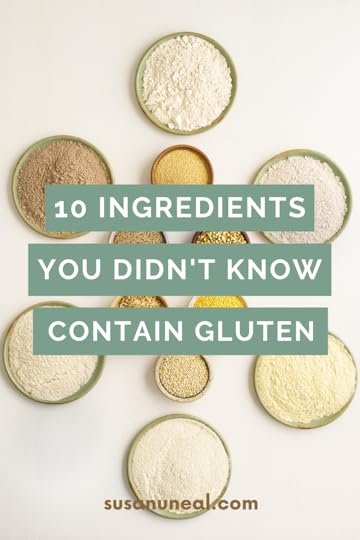
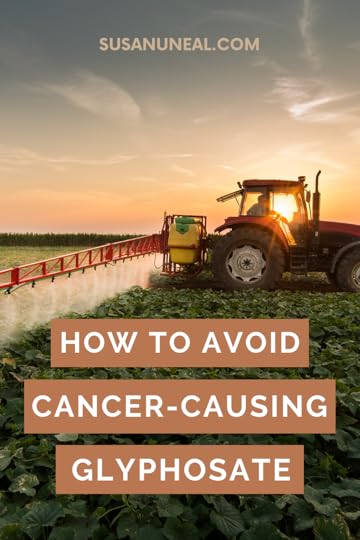
The post 4 Dangers with Today’s Foods – Glyphosate, GMO’s, Celiac Disease, & Gluten first appeared on .
August 21, 2021
Eat God’s Food: A Kid’s Guide to Healthy Eating

Pensacola, Florida, June 25, 2021—Nearly 1 in 4 children are overweight or suffer from obesity. Susan U. Neal wants to eradicate this epidemic by educating children about developing wholesome eating habits through her newest release, Eat God’s Food: A Kid’s Guide to Healthy Eating. Susan helped thousands improve their health and weight with her award-winning bestseller, 7 Steps to Get Off Sugar and Carbohydrates. Now she’s educating children through picture books.
Instead of letting a child’s taste buds rule over the family’s food choices, Eat God’s Food teaches them to love the right kinds of food before they form bad eating habits. Susan says, “Kindergarteners who are overweight are four times more likely to have obesity by eighth grade. It’s easier to influence a child’s food and physical activity choices when they are young. Kids are smart; they can understand that whole foods contain nutrients and processed foods don’t.”
Eat God’s Food teaches children to avoid junk food and instead:drink water, not beverages that are loaded with sugaravoid products made with white flour as the nutrients are stripped from the wheatavoid prepackaged foods because they do not provide the body with vitamins and mineralsread food labels to determine if food companies added sugar, corn syrup, preservatives, or other harmful ingredientsEat God’s Food also includes fun educational activities:Draw vegetablesIdentify fruit colorsCount the vegetables you have eaten (50+ listed)Match nuts, grains, and seeds with their picturesFind high-protein foodsDetermine when seasonal fruits and vegetables ripenSeek and find fruitIdentify unhealthy items on a food labelTeaching kids early in their formative years to eat a healthy diet and limit caloric-rich sweets and processed foods is key to decreasing the childhood obesity epidemic.
Eat God’s Food (ISBN 978-1649492890 Trade Paper $12.99, ISBN 978-1649492906 Hardcover $24.99)from Elk Lake Publishing is available on Amazon and Barnes & Noble.
~Pin for Later~
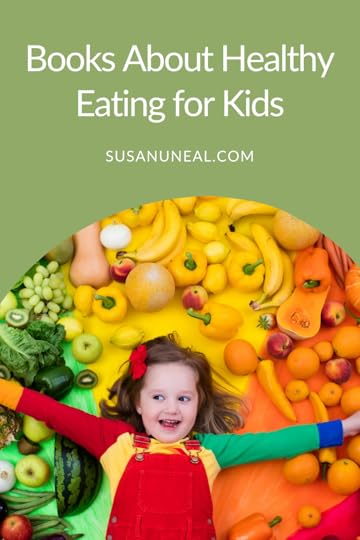
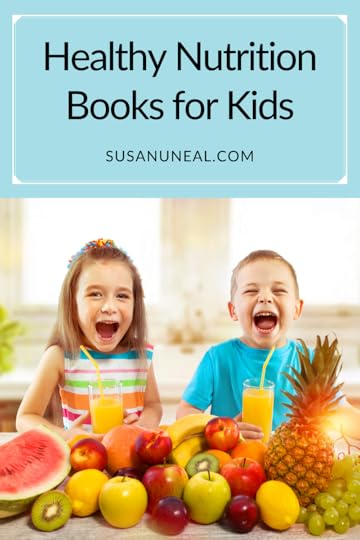 The post Eat God’s Food: A Kid’s Guide to Healthy Eating first appeared on .
The post Eat God’s Food: A Kid’s Guide to Healthy Eating first appeared on .
June 24, 2021
Prayerwalking: Walking for Your Health, Praying for Your Community
Some years ago, I was falling apart physically. I needed to improve my health, but I also knew God had been nudging me to spend more time with him. So I got up just a little bit earlier the next day to walk. And while I walked, I would take care of my prayer lists.
There was a lot of my-ness in those early prayers: my marriage, my kids, my teaching job. That changed when I saw a young man entrust his blanketed little girl to the daycare worker outside Toddler Towers in our town of eight hundred in the Sierra Valley.
Before six in the morning I heard that little girl say, “Bye, Daddy. I love you.”
I knew right then that God had me out on the streets of my town not for my prayers but more for the needs of the people in my community.
I began opening my eyes and praying for the business owners along Main Street, the commuters headed to Reno, and the folks still sleeping in their homes. Soon I realized I didn’t have enough time to pray and began to add more minutes until I was walking a good hour or more each day—also praying for the schoolteachers and staff, the city and county employees, church pastors, and hospital and emergency services workers.

There’s a biblical rationale for prayerwalking. Matthew 9:9 tells us that as Jesus was walking along, he saw Matthew sitting at his tax collector’s booth and said to him, “Follow me and be my disciple.” What if Jesus hadn’t been walking along? What if Jesus had stayed home? Would he have called the future gospel writer as his disciple?
The early morning after I learned a student’s father had committed suicide, I was out walking and praying about what to do for that young man and how to support other students who might need help themselves. As I walked, I ran into two sisters and expressed my concern about what to do. One said, “Call Anne and Ann. They’ll know what to do.” Those two women were social workers in our county who worked with youth. I called them, and they set up a room in the high school where students could get help. My prayerwalking that morning allowed for that encounter that gave me personal direction.
Prayerwalking helps us see people’s needs.In John 5:1–15 we learn that Jesus returned to Jerusalem for a pilgrimage feast, saw a

man lying by the pool of Bethesda, and healed him. What if Jesus hadn’t walked to Jerusalem for the feast? What if Jesus had stayed home? What if the man had never been healed?
Last summer I went prayerwalking in my little town with my visiting sister-in-law Lisa. The next morning, she asked if I had pruning shears she could
borrow. “I’d like to trim up the roses in that rose garden,” she said. As we had walked, she had noticed that the roses in a garden at the Catholic Church were in dire need of pruning. After I made a phone call to get permission, I collected a bunch of supplies,
and we both spent a full morning working on the project—filling many yard and garden bags. As we prayerwalk, we’ll see needs that people have—needs that we might be able to meet ourselves.
Prayerwalking gives us insights about what is not working systemically in our community.In Mathew 12:1–8 we find that when Jesus and his disciples were walking on the Sabbath, his disciples started gleaning grain. When the Pharisees criticized them, the experience provided a teaching moment for Jesus about legalism and graceless living. Our prayerwalking will allow us to see issues such as poverty and racism—helping to direct our prayers.
As I’ve prayerwalked, I’ve seen racist graffiti (I reported that), heard couples arguing, and even watched what I’m guessing was a drug deal going down in the early morning hours. Being on the streets, as opposed to a treadmill, has given me insight into serious issues that exist even in my rural area. The practice of walking and praying means I’m stepping out of my comfort bubble to see the realities and pray accordingly.
Prayerwalking is preparation for the harvest.In Matthew 9:35–37 Jesus teaches that prayer is important so as to prepare a faith harvest. Prayer warriors are the advance team before others come to faith. It has been reported widely that concentrated prayer efforts preceded all the major revival movements. Praying on-site with insight, as author Steve Hawthorne writes, helps us pray fervently for our communities.
Prayerwalking helps us identify with Jesus.When Jesus approached Jerusalem for the last time, he wept over the city (Luke 19:41). As we prayerwalk, we can identify with our Lord as our hearts become more compassionate for the lost.
Because I began to understand that wherever I was, there was a need for prayer, my mindset shifted from a self-focused perspective to an outward one, and my fears and depression vanished. I also experienced physical healing and significant weight loss. Additionally, the depression that had clouded most of my adult life up until that time disappeared as did anxiety.
During this crazy season there’s no reason we can’t go for a good walk, which will promote a healthy lifestyle, develop our strength and resistance, and help counter the Covid food craziness. In fact, walking as an exercise is making a comeback, and as we embrace it, we can multi-task our miles by praying for our neighborhoods. Here are some suggestions to carry it off well:
Keep it simple. You don’t need fancy clothes—just a good pair of shoes and clothes that address weather needs.Stretch. Don’t stretch before you walk; wait until afterwards (suggested stretching exercises are in PrayerWalk ). If you stretch when your muscles, tendons, and ligaments are cold, you could hurt yourself.Schedule your walk. Put your prayerwalking times on your calendar, and see them as appointments for your health.Leave the buds. Music or podcasts can distract you from noticing the prayer needs as well as oncoming traffic.Pray for what you see: schools, homes, commuters, the social and justice issues in your community, and more.As you prayerwalk your community, you will develop a praying-without-ceasing perspective, and God will hear and answer your prayers.
About the Author:
Janet Holm McHenry is the author of 24 books, including the bestselling PrayerWalk: Becoming a Woman of Prayer, Strength and Discipline (WaterBrook). Her prayerwalking practices have been featured in Health magazine, Woman’s Day, First for Women and others. She loves to speak about how God transformed her life as she has partnered with God in prayer and invites you to connect with her through social media, her group called The Walking Club, or her website: https://www.janetmchenry.com.
~Pin for Later~
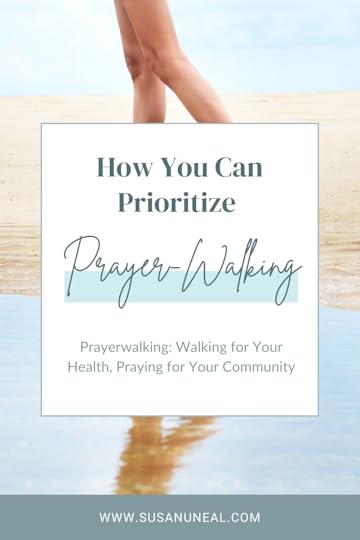
 The post Prayerwalking: Walking for Your Health, Praying for Your Community first appeared on .
The post Prayerwalking: Walking for Your Health, Praying for Your Community first appeared on .
June 10, 2021
8 Ways Busy Mom’s Can Prioritize Self-Care
Rearing our children is every parent’s most important job. To do that well, we need to take care of ourselves emotionally, physically, intellectually, and spiritually. On an airplane, passengers are instructed to put the emergency oxygen mask on themselves first because if they become incapacitated, they can’t correctly apply their child’s mask. As a burnt-out mom, you can’t care for your kids to the best of your ability. Therefore, self-care improves parenting.

When you care for yourself, you parent better. After a frustrating day with my three children, I take a long, hot bath. Once I emerge from my time of solace, I feel rejuvenated and more attentive to my family. My quiet time helps restore my positive attitude.
MeditatingSelf-care is a big task when you parent and have a job. Carving out short periods for yourself is one way to accomplish self-care. Most mornings, before anyone awakens, I spend fifteen minutes meditating. This time nourishes my soul and gives me the spiritual energy I require to love my family unconditionally. If one of my children awakened, I would ask them to sit by me and spend a few minutes of quiet time praying. What time of day could you spend with the Lord? Is the evening, after your kids are in bed, better for you?
ExerciseTo care for myself physically, I teach Christian yoga classes twice a week and work out at the gym. Demonstrating physical activity to your children encourages them to pick up this healthy habit. Exercise prevents many diseases, improves cognition and your overall health. Explain to your child how important it is for you to exercise so your body functions properly. My habit of working out rubbed off on my kids. My two oldest, who are in college, attend yoga classes and go to the gym regularly. Since I made it a priority to maintain my physical fitness, my young adult children do as well.
Eating Healthy FoodsEating healthy foods is another essential component of self-care. Consume organic fruits, vegetables, grass-fed meat without hormones or antibiotics, and nuts and seeds. Don’t eat refined grains, such as products made with white flour or rice; instead, enjoy quinoa, organic oats, and brown rice. Processed foods from boxes and bags provide no nutritional value and cause your blood sugar to rise and then plummet. When your blood sugar bottoms out, you don’t feel like parenting, and you may lose your cool with your kids.
I included healthy items in my children’s lunch boxes. Instead of fruit roll-ups, I placed a piece of fruit in their lunchbox. I explained how fiber and vitamins from fruit and vegetables helped them grow. Fruit roll-ups were stripped of their nutrients and likely had added sugar, which was not good for them. Add fresh, crunchy vegetables, such as sugar snap peas, celery, and carrots, in your child’s lunch instead of chips and crackers. Since I taught my children about eating healthy, my two oldest daughters have become health nuts and share their healthy recipes with me.
Reading or WritingEach of us needs intellectual stimulation, whether through work, reading a book, or calculating the monthly budget. I love to write and inspire others to improve their health through my prose. Finding what stimulates you mentally will keep your mind active and provide intrinsic satisfaction. What activities challenge your brain?
Emotional ConnectionEmotionally we need connections, whether it is with our spouse, significant other, or friends. We can also attain fulfillment through our relationship with God. We need someone with whom we can share our thoughts and feelings. Our children need that emotional connection too. I found that taking my daughter on a date to a local coffee shop or ice cream parlor increased her capacity to converse with me. Also, tucking a child in bed at night allows quiet time for him or her to open up and share. As a mom, we need to be ready when the window of our child’s heart opens, and they want to talk. We need to stop what we are doing and listen because later on, the door to their heart might be closed, and we missed that perfect opportunity.
Family vacations, date nights, or lunch with a friend fulfill our emotional needs. Promote family relations at dinner time. During my vacation in France, I embraced the French culture of dining for two hours. You could serve appetizers at 20-minute intervals (such as a melon and then a salad) before the main entrée. Time at the table allows a family to sit together and talk. In America, we may spend an hour cooking and eat our meal in twenty minutes. Maybe we should change this negative habit because spending family time together restores the emotional part of our soul.
Saying NoSelf-care, like the oxygen mask on the airplane, is easier said than done. Sometimes you need to say “no” to events and activities, so you have time for yourself. To get your kids on board, explain how essential it is for you to take care of yourself, whether through working out at the gym or reading a book. Help them understand that when you take time for self-care, you become a more patient mother. If you can’t carve out a significant amount of time, then use a few minutes here and there to read one page in a book or shoot a quick prayer to the Lord. Your body, mind, spirit, and children will thank you.
What is one self-care tactic you can employ today? Schedule a time to speak with your children about the importance of personal time for yourself, so that you can parent them better.
~Pin for Later~

 The post 8 Ways Busy Mom’s Can Prioritize Self-Care first appeared on .
The post 8 Ways Busy Mom’s Can Prioritize Self-Care first appeared on .
May 26, 2021
Healthy Eating on Campus: A College Approach to Healthy Eating

Are you or your child in the process of selecting a college or university to attend? Are you looking for that perfect intersection of a degree program, location, and cost? Have you considered campus food plans? Yes, you heard me correctly. Thinking about healthy eating on campus has become increasingly more important when choosing a college to attend. There are several aspects to consider when looking at a college’s approach to healthy eating. A good school should have considered the many factors behind how food is grown, harvested, processed, transported, and finally prepared. That information should be readily available to you. Let’s look at three of those factors: environmental sustainability, animal welfare, and animal-to-human relationships.
Environmental Sustainability
Simply defined, environmental sustainability means growing enough food to feed the world’s population without causing excess harm to the planet. It means food that is safe, healthy, and free of extra toxins, pesticides, or additives. I like the way one website puts it: “A sustainable model in the food system promotes the physical health of the public, the economic health of farmers and producers, and the fair treatment of the earth, animals, and people.” (https://ecowarriorprincess.net/2018/02/10-ways-make-food-system-sustainable)
Most people agree all that is a good thing, but have we looked to see if the college has considered those guidelines as well? The answer is, maybe. It becomes the responsibility of the people attending that school to do their due diligence and research on how much thought goes into food offerings. It’s not the size or prestige of the university that determines their food system choices. Their stated values and mission statements, however, should include information on how those choices promote and nurture healthy living.
Today’s college students are more aware of healthy food choices than perhaps their parents or grandparents were back in the day. One study found that students are more likely to make healthy selections when the food is actually placed in front of them prior to selection. Colleges that simply display a menu board only listing food available for that meal report students making consistently less healthy food choices than schools where the actual food is presented or, better yet, being prepared in front of them.
American culture today is more aware than ever of the need to follow individualized eating choices, given the array of preferences and actual medical needs when selecting specific foods. Some students want or need, a plant-based diet that contains variations in beans, chickpeas, or tofu, while others prefer a mix of plant and animal-based diets. Whether a student needs a regular, gluten-free, sugar-free, dairy-free, nut-free, or other specialized diets, we need to ask if that college meets those nutritional needs with what are considered “ethical” processes. Ethical processing refers to how the food is grown (plant-based) or raised and butchered (animal-based).
Animal WelfareSelecting ethically processed plant foods means looking for crops grown with no, or with reduced, pesticides. These foods ship quickly to consumer markets and are often identified with some sort of organic label. Animal-sourced foods, however, are much trickier to trace regarding how the animals are bred, raised, butchered, and shipped to consumers.
A quick look at a food label can sometimes provide assurance that the animals are treated with their best welfare in mind and by using environmentally sustainable methods. For example, a label on meat from a heritage company (one that only raises pre-industrial farm animals) contains a number that consumers can use to track down where the food originated and how it was processed. Farmers and ranchers in those plans adhere to animal welfare guidelines established by the “Certified Humane” program, or the “Animal Welfare Approved” program. Raising animals humanely means they must be raised outdoors in pastures with appropriate grass conditions of animal-to-land ratios and must not receive antibiotics or growth hormones.
Some ranchers even consider the emotional well-being of their animals, knowing that stress can negatively impact the quality of the final product. Medical science has well documented the effect stress has on human quality of life and health. Now, researchers are considering ways to optimize the health and welfare of animals that result in improved meat quality. Contributions of Temple Grandin, a Ph.D. animal science professor and influential advocate for people with autism, bolstered a growing field known as Compassionate Care for Animals. She developed specially designed equipment that reduces stress in animals during their handling, corralling, and transporting phases. The National Agricultural Library, a division of the U. S. Department of Agriculture, has many such examples (https://www.nal.usda.gov/awic/food-industry-animal-welfare-policies ).
All of this is great information, you may say, but you have enough to do with researching degree programs, costs, and admission requirements without tracking down how food is raised, processed, and transported. That’s exactly my point! You shouldn’t have to do all this research (unless it’s interesting to you, then by all means have at it!) but the college you choose should conduct ongoing research into food sources and preparation on your behalf. This kind of background knowledge can equip you to ask better, more informed questions when you narrow down your college choices. It’s fair to ask, if they don’t care enough about students to do this kind of research about quality meal choices, what other areas might they be neglecting?
Animal to Human RelationshipsMeat, milk, and eggs provide most of the protein we need in our diets as animal-sourced products. What cannot be forgotten, however, is that healthy animals produce healthy waste material. We often use their manure as a fertilizer for crops grown in the field and as such, it enters our human ecosystem even through solely plant-based diets. For us to be healthy, we need to eat healthy meats, fruits, vegetables, and grains. All those items are reciprocal somehow since each is an element of our food security and sustainability systems. To read more about that relationship, check out https://www.resilience.org/stories/2020/10/14-livestock-and-food-security-a-contested-relationship .
Growing and raising food to eat, whether plant or animal based, is critical to human life everywhere. The healthier our food, the healthier we are. It is a symbiotic relationship, one that we need to watch and protect. To recall the example above about reducing stress for meat-producing animals, I’m glad to hear that animals with less stress produce a higher quality meat. I don’t envision cows wearing sunhats, sunglasses, listening to classical music through their stereo headphones while soaking in bovine aromatherapy, but I’m glad to know scientists are looking for ways to improve my food sources. It is a recognition that the social and environmental impacts of growing and raising food for people are important for our planet’s—and our—continued food security needs.
Time to Make the College ConnectionYou’ve armed yourself with the requisite background information and now know there’s a lot more to cooking for college kids than throwing burgers and pizzas at them. Maybe you or your child is on a low-carb diet or a low-sugar diet. Maybe you’ve cut back on gluten or gone all the way to a gluten-free diet. Maybe you’ve chosen a vegan or vegetarian diet or have serious food allergies. Does the college or university you’re considering accommodate all those healthy diet food choices? How can you find out if they do?
By all means, include food questions in your interactions with various schools. Another alternative to consider, however, is looking over a college’s website. Go to the pages not frequented as often as admission requirements and scholarship opportunities. You could also visit websites that specifically filter questions on what different colleges and universities offer before you make your final choice. For example, at https://www.niche.com/colleges/search/best-colleges-for-food-and-nutrition, you’ll find an article titled, “2021 Top Colleges for Food Science and Nutrition in America.” The article has information about anyone interested in a food science course of study, but also contains information related to healthy eating on campus. The website itself also has a drop-down menu filtering many categories that might interest you, such as Greek life or political leanings, and includes rankings based on ethical considerations about sourcing and preparing food for students.
If I may add a personal example: ethical viability and environmental sustainability are two areas of importance to one of my grandsons. He narrowed down his college choices to those that included his interests in healthy living. Although he considered many other features, an important deciding factor was the ranking for what became his final school choice—his college was ranked number one in ethical food preparation. He is beginning his junior year there this fall and has been happy in all the usual aspects of college life, such as scholarship awards and study abroad opportunities. He also has confidence that he is eating healthy food prepared in ethically sustainable methods. Was food preparation his only concern? Of course not. But it added to his overall contentment and healthy lifestyle that enables him to pursue academics and future career choices based on his personal values. Perhaps it’s something you’ll want to consider as well.
Author Bio:Dr. Sherri Wynn is the founder and president of the nonprofit, International Christian Education Foundation. She is a Professor Emeritus at Indiana Wesleyan University, where she spent twenty years in the graduate education department teaching students pursuing a master’s degree or additional K-12 teaching licenses, including health sciences and physical education. Her educational books can be found at https://www.amazon.com/s?k=sherri+wynn&ref=nb_sb_noss and her latest publication has two guest chapters in Not Just an Elder’s Wife through e2Ministries Inc., at Not Just an Elder’s Wife (e2elders.org). She is speaking at their summer conference in July.
~Pin for Later~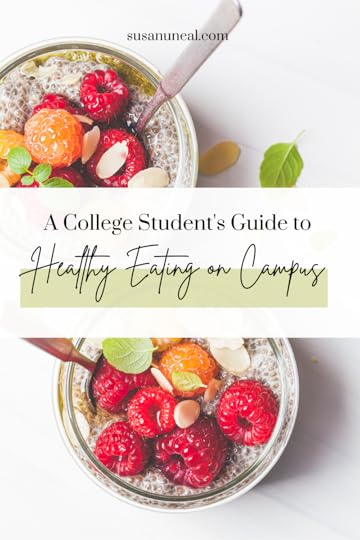


The post Healthy Eating on Campus: A College Approach to Healthy Eating first appeared on .
May 17, 2021
13 Easy Ways to Lower Blood Sugar Levels Naturally
Each morning as I wake up, my body tells me how well I ate the previous day. If I did not experience any blood sugar fluctuations, I have a clear mind and abundant energy. The incredible sensation of how God created our bodies to feel motivates me to eat well every day. I am more productive when I eat healthy foods—the foods God intended for us. Today I’m sharing 13 ways to lower blood sugar levels naturally.
Conversely, when my blood sugar spikes and then plummets, I feel drained, have a headache, can’t concentrate, and don’t feel like doing anything. Have you ever experienced the symptoms associated with low blood sugar? If yes, then you know how it can drain you of energy and enthusiasm.
My secret to maintaining a stable blood sugar level is eating low-carbohydrate, low-glycemic foods. This type of diet improves memory and cognition and prevents and reverses type 2 diabetes.
A low-glycemic diet does not raise blood sugar or insulin levels. Foods high in refined carbohydrates cause a release of glucose (sugar) into the bloodstream and a corresponding rise in insulin. Avoid the following high-carbohydrate foods: cakes, crackers, cookies, sugary cereals and drinks, flours, bread products, jellies/jams, and refined potato products. In addition, these types of foods are addictive.
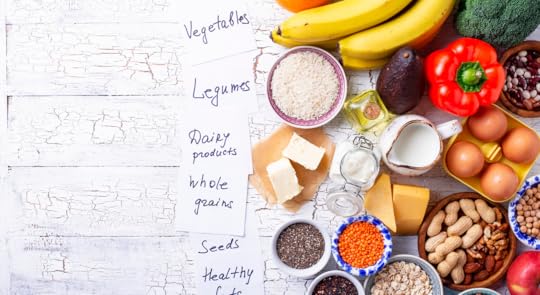
Instead, follow these tips to maintain a balanced blood sugar level
Incorporate more fresh organic vegetables into your diet—up to 50% of your food intake. Eat several servings of raw vegetables every day. Have a salad for lunch with either nuts, avocado, or meat. When eating out, order a salad or coleslaw as sides, since both are raw.Consume only one fresh, raw serving of low-glycemic fruit per day. Low-glycemic fruits include green apples, berries, cherries, pears, plums, and grapefruit. Make sure to check out the 2021 Dirty Dozen and Clean Fifteen Produce ListsMake sure to eat enough animal or vegetable protein (25% of your food intake) such as beans, nuts, and lean meats. Try to eat fresh fish once a week.Eat a variety of nuts and seeds as they are excellent sources of protein, minerals, and essential fatty acids.Avoid sugar, flour, rice, pasta, and bread. Instead, eat more fruits, vegetables, and low-glycemic grains such as quinoa and pearled barley.Skip the sugary cereals. Instead, eat organic oatmeal or eggs.Read labels and do not to eat anything containing more than 10 grams of sugar in one serving.Eat ancient grains such as quinoa, amaranth, pearled barley, and wild rice.Replace sugary snacks with nuts, nut butter, dark chocolate, and plain Greek yogurt with berries.Replace condiments and sauces containing high-fructose corn syrup with spices, vinegar, and herbs.Replace fried foods with baked foods.Boil eggs and keep them in the refrigerator for a nutritious snack.When you do eat high-sugar content foods, eat some nuts (high protein) with it to prevent your sugar level from rising.Sugar SubstitutesStevia is a natural sweetener, which is an herb. Purchase stevia in a health food store because popular stevia products at the grocery store are too refined. Another option is local honey. However, honey raises blood sugar levels. I use a powder form of stevia for baking. Also, I found a natural sweetener with zero calories that rates zero on the glycemic index—monk fruit sweetener.
The following list gives the best natural sugar substitutes based on their glycemic index:
stevia-0monk fruit sweetener-0xylitol-12agave-15coconut sugar-35honey-50maple syrup-54Try out these different sweeteners. Choose a natural, low-glycemic sweetener that you can live with and use it sparingly. Check out my post on 6 Tips to Fight Your Sweet Tooth.
Pasta SubstitutesDelicious pasta substitutes include spaghetti squash, shirataki noodles, and spiralized zucchini. Spaghetti squash can sit on a counter for a couple of weeks, just like a box of spaghetti, and it is simple to cook. The squash absorbs any flavor you put on it, such as shrimp scampi or spaghetti sauce. This vegetable also tastes great as a side dish with olive oil and seasonings.
A spiralizer machine produces tasty zucchini noodles. For shirataki noodles, cook them as directed on the package and add your sauce. Again, zucchini and shirataki noodles absorb the flavor of the sauce added to them.
Grocery Shopping TipsWhile shopping at a grocery store, shop along the edges of the store in the produce, meat, and refrigerated sections. Stay away from the center of the store where processed foods experience an extended shelf life. A long shelf life means the nutritional value of the food has been removed. Otherwise, the food becomes rancid at some point. As a rule of thumb, buy foods that spoil, like vegetables and fruit. Stay away from foods that don’t spoil, like canned foods, rice, and pasta.
If you previously consumed high-sugar products, the fluctuations in your blood sugar may have caused lethargy, especially when blood-sugar levels plummeted. As you remove these products from your diet, at first you will become even more tired, but after a few days, your energy level will increase and your weight will decrease.
I connected many of the health problems we suffer to eating habits. You can change your life by changing the types of food you eat. These dietary modifications will stabilize your blood sugar levels and start your lifestyle journey to the abundant life Jesus wants you to experience—one with health and vitality.
Author BioSusan Neal RN, MBA, MHS is the award-winning author of seven books including 7 Steps to Get Off Sugar and Carbohydrates. She is a Certified Christian Health & Wellness Coach and inspires others to reclaim their health.
Pin for Later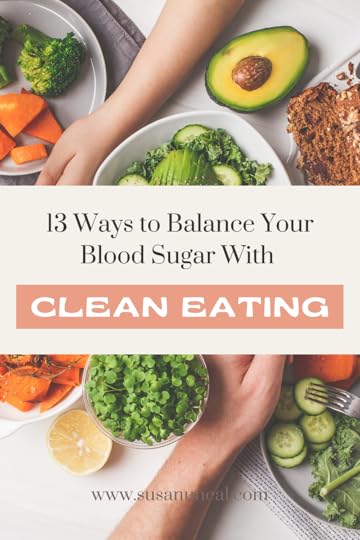


The post 13 Easy Ways to Lower Blood Sugar Levels Naturally first appeared on .



